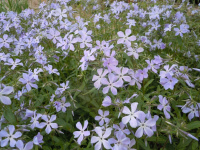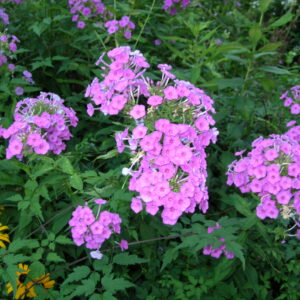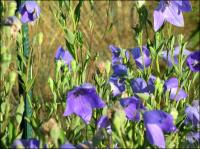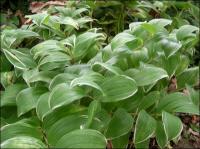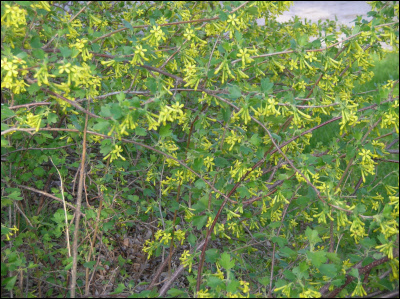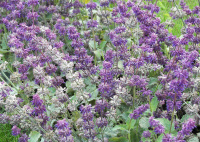Plants for Hummingbirds
Showing 57–64 of 78 results
-
Phlox divaricata Wild sweet William Z 3-8
Bright lavender flowers, tubes opening to five flat, paddle-shaped lobes, welcome spring. One of internationally known garden designer Piet Oudolf’s 100 “MUST HAVE” plants, Gardens Illustrated 94 (2013)
Bright lavender flowers, tubes opening to five flat, paddle-shaped lobes, welcome spring. One of internationally known garden designer Piet Oudolf’s 100 “MUST HAVE” plants, Gardens Illustrated 94 (2013)
Size: 12" x 10"
Care: part shade in moist, well-drained soil.
Native: Canada to New England, Wisconsin
Wildlife Value: pollinated by Tiger swallowtail butterflies, hummingbirds, bumblebees and others while they reach the flower’s nectar
Awards: Received England’s Royal Horticultural Society Award of Merit.Phlox is Greek meaning “flame.” 1st introduced to gardens by John Bartram around 1746. Recommended by Gertrude Jekyll, mother of mixed perennial borders, in 1908.
-
Phlox paniculata Garden phlox Z 4-8
Many small, tube-shaped flowers opening to five flat petals join together in a dome-shaped, fragrant, magenta 6-8” cluster at the end of each branch, blooming from July to September. The classic farm garden flower. Deadhead for rebloom.
Many small, tube-shaped flowers opening to five flat petals join together in a dome-shaped, fragrant, magenta 6-8” cluster at the end of each branch, blooming from July to September. The classic farm garden flower. Deadhead for rebloom.
Size: 4' x 2' spreader and self-seeder
Care: full sun to part shade in moist or moist well-drained soil.
Native: Pennsylvania west to Arkansas and Missouri. South to Alabama.
Wildlife Value: Silvery checkerspot, European cabbage, and Blue, Black & Spicebush swallowtails butterflies relish Phlox’s nectar. Deer and Walnut resistant.Phlox is Greek meaning flame. One of the 1st plants collected in No. America – grown in Tradescant the Elder’s South Lambeth (now a borough of South London) nursery in 1634. Offered for sale in Bartram Garden’s 1783 Broadside, America’s 1st plant catalog.
-
Platycodon grandiflorus Balloon flower Z 3-9
Balloon shaped buds as though puffed with air, open to blue, five-petal bells from mid-summer to early fall.
Balloon shaped buds as though puffed with air, open to blue, five-petal bells from mid-summer to early fall.
Size: 24" x 12"
Care: Sun to part shade in moist well-drained soil, heat and drought tolerant. Deadhead for rebloom.
Native: Eastern Asia
Wildlife Value: attracts butterflies, bees & hummingbirds
Awards: Received England’s Royal Horticultural Society Award of Merit.Platycodon is Greek from platys meaning “broad” and kodon meaning “bell”, referring to the shape of the flower. Cultivated in China for hundreds of years where it is called Jie-geng. The Chinese used the root boiled to cure a chill in the stomach. Mentioned in Man’yoshu, a Japanese anthology of poems written in the 8th century. German botanist Johann Gmelin first discovered P. grandiflorus in Siberia in 1754. Gmelin’s Siberian mission, sponsored by Catherine the Great, took 10 years and nearly killed him. Gmelin introduced it to European garden cultivation by 1782. Cultivated in the U.S. since the 1800’s.
-
Polygonatum falcatum var. variegatum Variegated Solomon seal Z 4-9
Gracefully arching Solomon seal with white margined leaves and white bells dangling from each leaf axil in spring
Gracefully arching Solomon seal with white margined leaves and white bells dangling from each leaf axil in spring
Size: 20" x 4' slow spreader
Care: moist to moist well-drained soil in shade.
Native: Japan
Wildlife Value: Birds eat the fruit. Pollen and nectar feed a number of bee species.
Awards: Great Plant Pick Award; Perennial Plant Assn’s 2013 Plant of the Year; Missouri Botanic Garden Plant of Merit, Great Plants for Great Plains, Pennsylvania Horticultural Society Gold Medal1st identified by Japanese botanist Takenoshin Nakai (1882-1952) in “Botany Magazine of Tokyo” 1924.
-
Polygonatum multiflorum Solomon’s seal Z 4-10
Dangling dainty white bells in June followed by black fruit on the arching stem. The leaves “make a fine mass of elegant foliage,” Sanders, 1913.
Dangling dainty white bells in June followed by black fruit on the arching stem. The leaves “make a fine mass of elegant foliage,” Sanders, 1913.
Size: 5' x 10"
Care: shade in fertile, humusy, well-drained soil. Good dry shade plant
Native: Europe and AsiaGreek physician Dioscorides named Polygonatum in the 1st century, which means “many jointed” referring to scars on the rhizome. Medieval herbalists opined that Biblical figure Solomon put scars on the rhizome to demonstrate the plant’s curative powers. P. multiflorum cultivated in English gardens by 1450. In 1596 English herbalist Gerard endorsed its use to repair broken bones – mix the pulverized root and drink it with ale to “gleweth together the bones in very short space.” He also claimed fresh stamped root of Polygonatum would cure cuts and bruises for “women’s willfulness in stumbling on their hasty husband’s fists.” According to Culpepper, Italian wives “much used” this remedy. American gardens since 1700’s.
-
Pycanthemum muticum Clustered Mountain Mint, Blunt Mountain Mint Z 4-8
Silvery bracts underlying silvery-pink pincushion flowers blooming from June to September. Flowers and leaves emit a minty fragrance.
Silvery bracts underlying silvery-pink pincushion flowers blooming from June to September. Flowers and leaves emit a minty fragrance.
Size: 12-36” x 12-36” spreading.
Care: sun to part shade in moist to well-drained soil, drought tolerant
Native: Maine to Michigan, south and angling southwest from Wisconsin to Texas
Wildlife Value: Deer resistant. One of highest nectar and pollen producing flowers, attracting copious numbers and kinds of bees, butterflies, wasps, and other insects.
Awards: Georgia Native Plant Society Plant of the Year 2022, Perennial Plant Society of the Year.Collected and described by French botanist André Michaux (1746-1802) who spent 11 years exploring the North America for plants. c. 1795.
-
Ribes aureum syn. Ribes odoratum Clove currant Z 3-8
Early to mid-spring yellow flowers shaped like a tube with 5 petals opening wide at the ends smother the shrub giving off a sweet, clove-scented fragrance – heavenly. Ships only in spring.
Early to mid-spring yellow flowers shaped like a tube with 5 petals opening wide at the ends smother the shrub giving off a sweet, clove-scented fragrance – heavenly. Ships only in spring.
Size: 6' x 6' spreading
Care: Sun in moist well-drained to well-drained soil.
Native: west-central US
Wildlife Value: Attracts bees, butterflies and hummingbirds for nectar. Small mammals eat the berries. Immune to Walnut toxinsMany tribes ate the berries. Shoshone and Paiute used the shrub’s inner bark to heal sores and swellings. Meriwether Lewis on the Lewis & Clark Expedition found this in 2 locations – “near the narrows of the Columbia” April 16 1806, now Klickitat County Washington, and on July 29, 1805 in Montana.
**LISTED AS OUT OF STOCK BECAUSE WE DO NOT SHIP THIS ITEM. IT IS AVAILABLE FOR PURCHASE AT OUR RETAIL LOCATION.
-
Salvia verticillata Lilac sage, whorley clary, Salbey Z 5-8
Muted lilac blue spikes June to October
Lillac flowers encircle erect stem spikes interspersed with bare, purple stems. June to October, deadhead for more blooms.
Size: 24” x 18-24”
Care: sun in moist well-drained to well-drained soil. Cut back after 1st bloom to repeat.
Native: Spain to Ukraine, Caucasus to Iran
Wildlife Value: Butterfly and bee magnet. Deer resistantSalvia is from the Latin “salveo” meaning “to heal” referring to the plant’s ancient medicinal uses. This species collected before 1753. Grown at America’s 1st botanic garden, Elgin Botanic Garden 1811.

